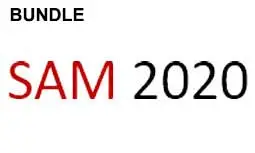Gridless Sparsity-Based Localization for Near-Field Sources with Symmetric Linear Array
Weiliang Zuo, Jingmin Xin, Tong Xiao, Nanning Zheng, Akira Sano
-
Members: FreeSPS
IEEE Members: $11.00
Non-members: $15.00Length: 13:09
09 Jun 2020
In this paper, we investigate the problem of estimating the directions-of-arrival (DOAs) and ranges
of multiple near-field narrowband sources impinging on a symmetric
uniform linear array (ULA).
By forming a Toeplitz-like correlation matrix from the anti-diagonal elements of the array covariance matrix, a convex optimization problem for the resultant Toeplitz-like matrix reconstruction is established and further a gridless sparsity-based localization for near-field sources is proposed.
The DOAs can then be retrieved by using the recovered correlation matrix according to root-MUSIC or Vandermonde decomposition theorem. Additionally, the ranges are obtained through a subspace-based estimator with the
corresponding estimated DOAs, while the association of the estimated DOAs and ranges are completed at the same time.
Finally, the numerical
examples are provided to substantiate the performance of our proposed method, and the simulation
results demonstrate that the proposed method provides remarkable and
satisfactory estimation performance.
of multiple near-field narrowband sources impinging on a symmetric
uniform linear array (ULA).
By forming a Toeplitz-like correlation matrix from the anti-diagonal elements of the array covariance matrix, a convex optimization problem for the resultant Toeplitz-like matrix reconstruction is established and further a gridless sparsity-based localization for near-field sources is proposed.
The DOAs can then be retrieved by using the recovered correlation matrix according to root-MUSIC or Vandermonde decomposition theorem. Additionally, the ranges are obtained through a subspace-based estimator with the
corresponding estimated DOAs, while the association of the estimated DOAs and ranges are completed at the same time.
Finally, the numerical
examples are provided to substantiate the performance of our proposed method, and the simulation
results demonstrate that the proposed method provides remarkable and
satisfactory estimation performance.



